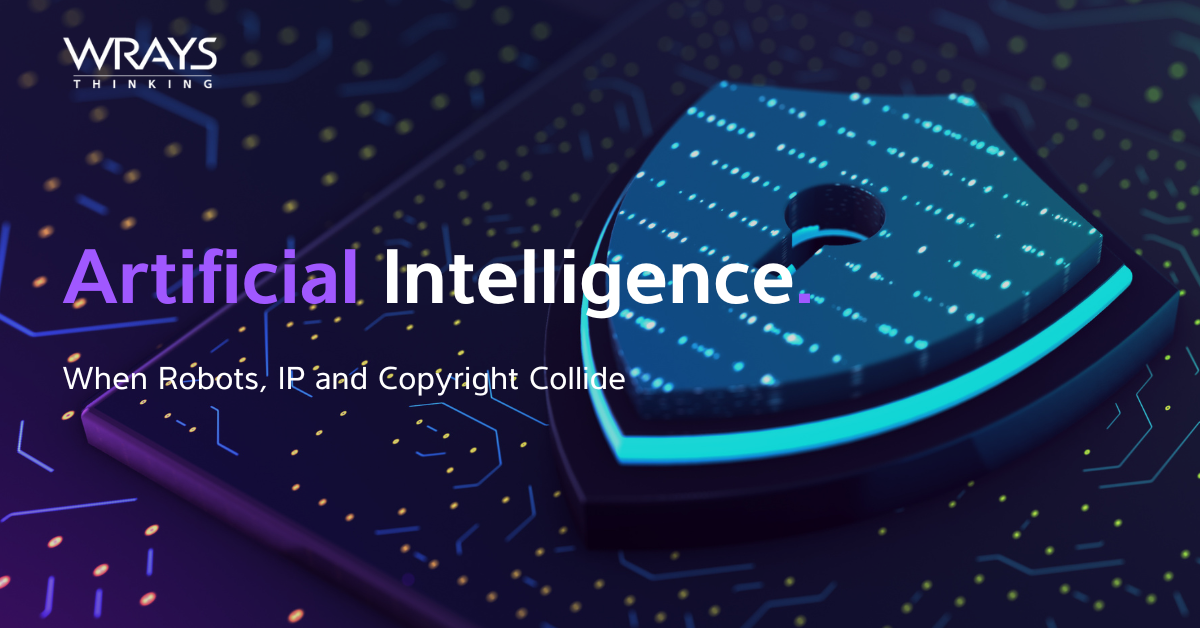When Robots, IP and Copyright Collide
It seems that everywhere we look at the moment, the issue of artificial intelligence (AI) and intellectual property rights is a hot topic. In fact, such a hot topic that it was difficult to know what angle to take for an article.
So, we asked one of the free chatbots this question, ”got any ideas for an article on AI and intellectual property”. It did. The title for the suggested article was “Navigating the Intellectual Property Landscape in the Age of AI: Opportunities and Challenges”. A good title but one that further research showed was very similar to titles for articles already written. That’s okay. It’s easy to change a title.
The suggested body for the article covered copyright and trade marks. In relation to copyright and trade marks, it was perhaps not surprising that the suggested focus of the article was whether AI generated works, trade marks etc could be protected and the resulting rights could be enforced.
Currently in Australia, the prevailing position is that there must be a human creator of a work for copyright to subsist (though this may change in the future). In relation to trade marks, the applicant must be a legal entity, which presumably an AI is not. However, there doesn’t seem to be anything in the Trade Marks Act 1995 (Cth) that would prevent a legal entity applying to register a mark that had been created by an AI.
The conclusion for the article was a general reiteration of the topic. It’s the type of conclusion that worked well in university essays. Our conclusion was that the AI-generated structure for a potential article was good if not a little unoriginal and bland.
So, was there a piece missing in the AI generated article? Yes. One of the most controversial issues is whether or not the companies that are training the AIs are liable for copyright infringement as a result of their use of literary, artistic and other works in the training process. In Australia, in December 2022, a number of artists raised concerns over Lensa, an app that uses AI to create self portraits. Anyone on social media was bound to have seen at least one post with such AI generated portraits.
In January 2023, Getty Images started proceedings in the UK against Stability AI. Getty Images claims that Stability AI, without permission, copied and processed millions of copyright protected images and the associated metadata. Getty Images has a licence available to businesses that are training AIs. At the same time, in the US, three artists started a class action against Midjourney, Stability AI and Deviant Art, each of which has launched an AI art generator.
Finally, to have a little fun with the chatbot, we asked it “can you create a brand name for an artificial intelligence used to create brands”. The Chatbot came up with 10 ideas for brands in a matter of seconds. They included BrandMind, BrandGenius, CreativeAI, BrainBrand, AI-BrandSmith and Smart Brandify. The chatbot suggested that a trade mark search should be conducted to make sure the brand was available. A quick mark search of the Australian Trade Marks Register returned no results except for an application for BRANDWISE in class 41 for training and education related services.
The collision of AI and intellectual property rights was perhaps inevitable. With AI tools being taken increasingly seriously and used more often, the writing and artistic communities will need to be aware of their legal protections, or lack thereof.

